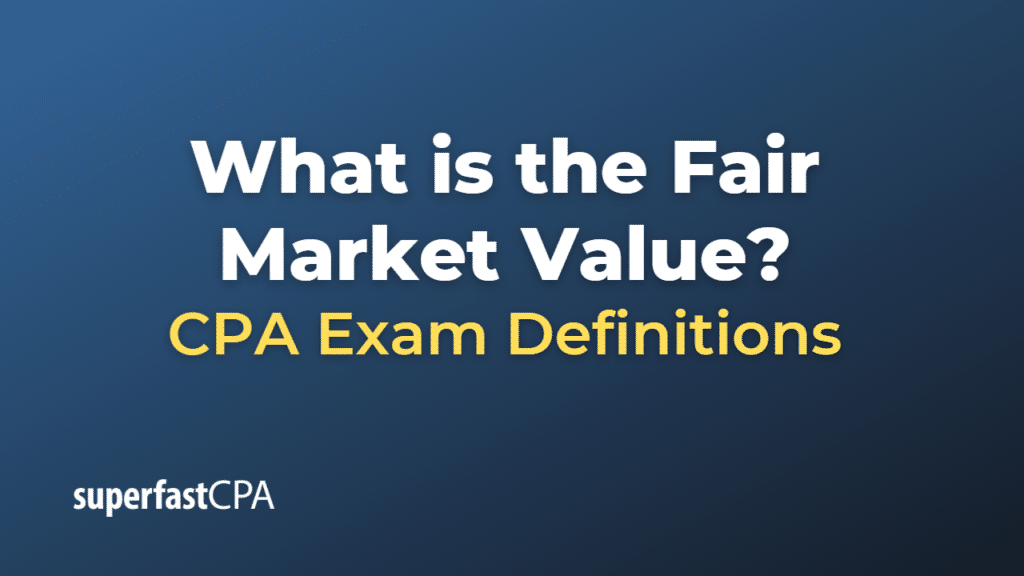Fair Market Value
Fair market value (FMV) is an estimate of the market value of a property, based on what a knowledgeable, willing, and unpressured buyer would probably pay to a knowledgeable, willing, and unpressured seller in the market. Essentially, it’s the price that an item would sell for on the open market.
The concept of fair market value is used in various legal and business applications. For instance, it’s a common basis for tax assessments, business valuation, and real estate transactions. FMV is also often used in insurance claims and in legal disputes over property value.
It’s important to note that fair market value can differ from the actual sale price of an item, particularly in situations where the buyer or seller is under some sort of pressure to complete the transaction, or if they lack full information about the item.
Several methods can be used to estimate the fair market value of an item, including:
- Comparables or Market Approach: This involves comparing the item to similar items that have recently sold in the same market. This approach is commonly used in real estate transactions.
- Income Approach: This method is typically used for income-generating properties. It involves estimating the present value of future income that the property could generate.
- Cost Approach: This method estimates how much it would cost to replace or reproduce the item, taking depreciation into account. This is often used for insurance purposes.
Each method has its own strengths and weaknesses, and the choice of method can depend on the nature of the item and the specifics of the situation.
Example of the Fair Market Value
let’s take a look at an example in the context of real estate.
Imagine you’re planning to sell your house. To set a price, you’d want to determine the fair market value of the property. This is the price that a willing buyer would reasonably pay, and it should reflect the true value of the house in its current condition within the current housing market.
To determine the fair market value, you would likely use the comparables or market approach. You’d look at the recent sale prices of similar homes in your neighborhood—these are known as “comps.
For instance, if similar homes in your neighborhood—same number of bedrooms, similar size lot, comparable amenities—have recently sold for around $250,000, then the fair market value of your home would likely be close to that amount, given that the condition of your property is comparable to those properties.
However, if your house has a newly renovated kitchen and an additional bathroom, which other houses in the neighborhood don’t have, your house might have a higher fair market value. On the contrary, if your house is in need of significant repairs, its fair market value might be lower.
Note that the fair market value is not necessarily the price you would list your home for, or the price a buyer would offer. It’s a starting point for negotiations. The final sale price might be influenced by various factors, including market conditions (e.g., whether it’s a buyer’s or a seller’s market), how quickly you need to sell, and how eager the buyer is to purchase your specific home.













